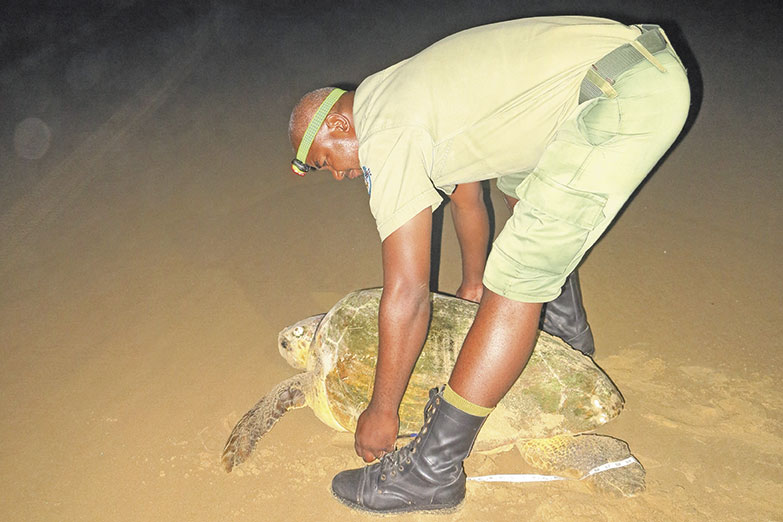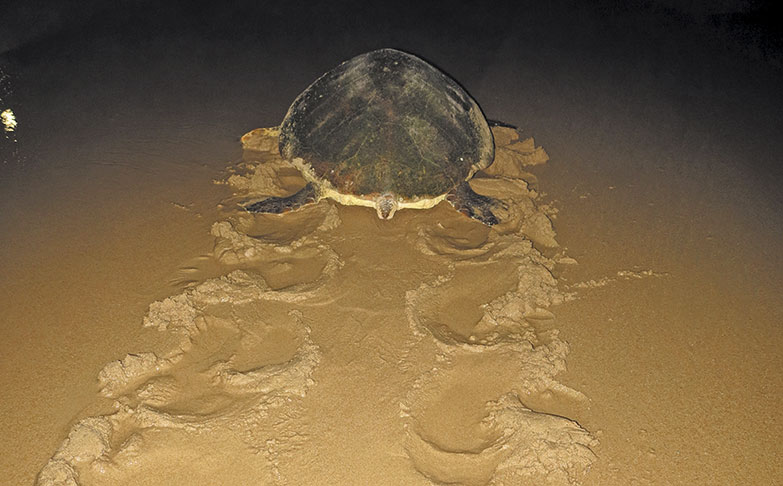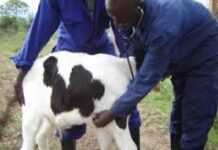Over the past few years, turtle poaching in Mozambique’s Ponta do Ouro Partial Marine Reserve (PPMR) has effectively disappeared.
The last poaching incident involved a visitor to the area; monitors reported him immediately and he was arrested.
This gives an idea of how passionate the community living around the reserve is about turtle conservation.
Vicente Matsimbe, a law enforcement officer for the PPMR, has been monitoring leatherback and loggerhead turtles on the beach between Ponta do Ouro and Santa Maria since 2009.

He oversees the community turtle monitors and knows these turtle species as well as he does his own family.
Community involvement
Sixteen of the 42 turtle monitors operate from Ponta Milibangalala, which is 50km north of Ponta do Ouro.
These monitors walk the beach every night during the turtle nesting and hatching season between October and March.
This involves collecting data on nesting loggerheads and leatherbacks, and monitoring the hatchlings as they emerge from their nests in January and February and head out to sea.
The monitors can cover 20km each in a night, every step of the way in beach sand. For many months, they get little sleep.
Bongani Mabuswane, one of two supervisors in the group, has been monitoring turtles for 10 years.
“This job is about respect for animals, and I learn new things every day. We’re the guardians of the turtles and there are definitely more turtles every year,” he says.
Ramiro Reis, the second supervisor, has monitored turtles for the same length of time.
“We understand the importance of protecting turtles, and nobody kills turtles anymore,” he says.
“Our job is important and we talk about turtle conservation with our families and friends too.
Children here grow up understanding turtle conservation, which is why they create safe passages for hatchlings to reach the sea.
The community is now very protective of the turtles.”
Ping-pong-ball eggs
Loggerhead and leatherback turtles come ashore at night to nest.
When nesting, a single female turtle slowly excavates a hole in a sand dune.
She begins by scraping away the loose, dry sand, using all four flippers, and then scoops out an egg chamber in the damp sand with just her rear flippers.

When this is as deep as she can make it (roughly 45cm), she deposits between 60 and 100 eggs, each the size and shape of a ping-pong ball.
Then, just as methodically, she scrapes sand back to cover and secure the eggs.
These will hatch in 45 to 55 days.
Interestingly, the sex of the hatchlings is determined by the temperature inside the nest.
After covering her nest, the exhausted female loggerhead lumbers back to the ocean.
Some turtles swim away immediately, but others lie in the shallow waves, mustering the energy to head out to sea again.
In two or three years, this turtle will be back to lay more eggs.
How she and other female turtles navigate to ‘their’ beaches year after year is still unknown.
Throughout this time, none of them ever sees any of their eggs hatch.
Predation by wildlife is a real threat to the eggs; hatchlings are taken by ghost crabs, seabirds and fish.
Once turtles reach adulthood, they have fewer predators, with sharks being the main threat.
There is good reason a female turtle lays so many eggs; statistics indicate that out of 1 000 eggs, only three turtles finally make it to maturity.
Committed volunteers
Pierre and Yvonne Lombard, volunteer turtle taggers and data collectors, work these beaches for six weeks a year during nesting season, and have been doing so for 23 years.
Their main aim is to tag the turtles, and last year they tagged 125 new loggerheads and 12 new leatherbacks in the 30km of beach they patrol.
The warden of the PPMR and the Maputo Special Reserve, Miguel Gonçalves, says that having turtle monitors is a win-win conservation concept.
“We started with six monitors and now have 42.
The value of live turtles is high now as they offer salaries to these people.”
The vigilance of the turtle monitors has had a profound effect on the turtles’ survival rate.
Miguel says that in nearby Machangulo, the community used to feed turtle eggs to their goats to make them fertile, and men ate the eggs for the same reason.
“In the past eight years, we’ve had only two turtles poached, and both incidents were reported by the monitors.
The poachers were caught and fined, and one was driven out of the village by the community.
“There’s a team at work here; it can’t be done by one person.
Our biggest success is that the beach is well patrolled and the community has taken ownership of the turtles.
This is important because turtle monitoring is forever.”
There are plans afoot to upgrade some of the monitors to turtle guides, so that tourists can walk with them on the beaches.





